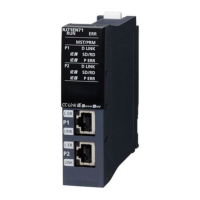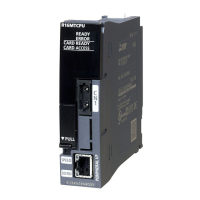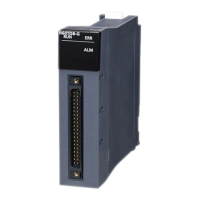13 CONTENTS AND REGISTRATION OF USER FRAMES FOR DATA COMMUNICATION
13.1 User Frame Types and Contents During Communication
255
13
■C24 processing to registered codes FFH+11H and FFH+17H
The two's complement sum check code that calculates the range for data (message) to be transmitted/received is expressed
as two character data in ASCII code, then transmitted and received from the upper digit.
The difference between (FFH+11H) and (FFH+17H) is the difference in the calculating ranges.
An example of the contents (arrangement) of the transmission and reception of the two's complement sum check code is
shown below.
Arrangement of data transmitted and received with the registered code FFH+17H (The start frame and final frame are
equivalent to one frame respectively.)
• How to calculate the two's complement sum check code
The lower 1 byte of the value obtained by adding the subject data as binary data is converted to a two's complement, then
converted to a hexadecimal ASCII code.
For message example above
02H
31H
33H 34H
FFH+17H
E
T
X
S
T
X
C
R
L
F
00H 3BH
02H FFH+01H
;
3BH
1
32H
2
03H 0DH
03H 0DH 0AH
46H 36H 0AH
34
User frame
(first frame)
Arbitrary data User frame
(last frame)
User frame register
code
Two's complement
sum check code
Station
No.
Transmission/rec
eption data code
Calculation range
02H+00H+3BH+31H+32H+33H+34H+03H=10AH
00001010
11110110
F6H
"F" "6"
(46H) (36H)
Data in the subject range are added as binary data (hexadecimal)
The lower 1 byte of the above numeric value
is expressed as a binary number
Reversed, then converted to a two's complement
Converted to a hexadecimal ASCII code

